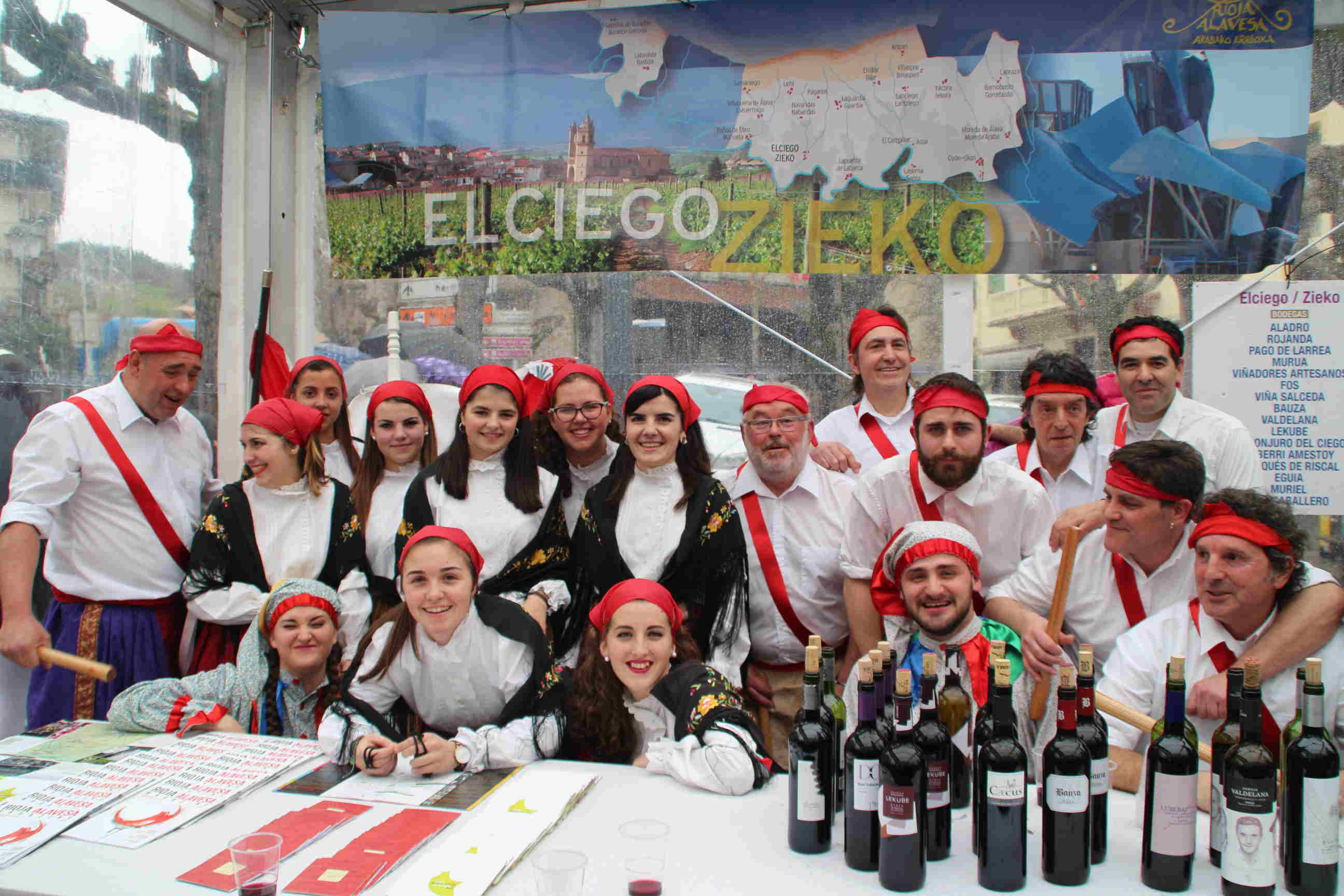You are here
Local dances
The most outstanding folkloric jewel still conserved in Elciego is without doubt the local dances which, every 8th September, are faithfully performed by the town people underneath the fixed, smiling look of its patron saint, Virgen de la Plaza. This eclectic mix of popular feeling and religion come together in a musical tone which our town has maintained up to the present with complete warmth and loyalty towards its existence. We are going to try to discover and develop the main aspects of most interest to ethnographers, inquisitive people and local residents who, without any theory or research, come every year to see the dancing and listen to the pipers, driven by an internal force.
Until a few years ago, the pipers of the area, mainly from Villabuena and Laguardia, were most heavily involved in the promotion of music by religious bodies. Nowadays only pipers from our town are entrusted with this function.
Eight girls, led and encouraged by the Cachimorro, are currently entrusted with dancing our ancestral dances. The quick, even brusque, movements, always rhythmical and symmetric, remind us that the town's elders were formerly entrusted with performing these dances, as well as some others which since been forgotten. With the passage of the years, they left behind their sticks, their adorned barrel string instruments and the various bows which decorated and enlivened the dances. Perhaps their aggressive leading role has left less margin for changes of gender or composure.
Five dances over the last 50 years have been performed and established as dances of Elciego:
Pasacalles: This accompanies Virgen de la Plaza to the parish, and vice versa. It is also used to introduce and conclude the dances.
La Danza: This begins with a V-shaped choreography, followed by a series of entrechats huits, finishing with the arms outstretched, parallel to the floor and positioned opposite each other.
Las cuatro calles: This has a pure stick dance structure, repeated five times amongst endless crossings and uncrossings.
El Árbol: A colourful dance found exclusively in the Basque Country. Despite being a Zinta Dantza, the bows are not braided but rather left to hang from a tree. The dancers kneel down and hug the tree and, after hanging the last bows, return to their original position.
La Jota: This has a different structure to the previous dances. A very popular dance for all ages, using the same scale as the others.
Who dances
Nowadays the group comprises eight girls and a Cachimorro. Formerly there were eight boys who danced, a Cachimorro and a Bastonero. As set out above, the dancers are male, with quick, brusque movements which are not very feminine. The change from boys to girls has a straightforward explanation:
In our town, as in most of the surrounding area, it is easier to recruit girls than boys.
In the 1940s, the female section took on the task of performing the dances, which had not been performed during the war, and when it came to putting together a group it was with eight girls plus the Cachimorro.
Clothing
Formerly the boys wore a shirt and white trousers on the eve of the festivity. On the day of the festivity they would add a white serge shirt decorated with sequins. As of this moment they wore espadrilles, a red girdle to support the serge shirt, a handkerchief or colour strip across the chest, a handkerchief on the head known as "Chorongo" (which was decorated with a twig of basil) and a scapular of each of the eight brotherhoods in Elciego, meaning each brotherhood provided a dancer.
Nowadays the clothing used is very different. The explanation is as follows:
In 1945 the dancers of Elciego attended the Feria del Campo in Madrid. As of this moment it was necessary to change the masculine clothing of the recently formed group to something more feminine, which was usually done as follows: The handkerchief or strip which crossed the boys' handkerchief was replaced by a mantilla, which was highly fashionable at the time, particularly in Madrid. The white serge shirt was replaced with a more colourful one, which was provided for the occasion by the Villabuena group. The white trousers were replaced with knee-length or frilly skirts finished with colourful lacing. Finally, the white shirt was replaced with a white blouse, the neck and cuffs of which were decorated with lace. The only part of the male outfit which did not change was the espadrilles and the red handkerchief worn on the head.
The Cachimorro, the only male in the group, is dressed in a patterned, polychrome suit with wide colour bows in the neck and small bells around the waist, plus a pointed cap. He leads the dance with a long stick with a bunch of coloured bows on the end, wearing espadrilles and tights in unmatching colours. When this dance is performed, it is easy to see that he plays the role of Bastonero who leads the dance, whilst dressed as a buffoon like the Cachimorros. We are not aware of when one personality absorbed the other.
The dance group was made up of boys and girls but at the end of the 1970s the group disappeared. In 2015 the older male dancers decided to take up the already existing “paloteado” (stick dance) and created the “Valduengo” stick dance made up of “Gaiteros de Elciego” (Elciego pipers) and choreographed by Amaigoia Egiluze and Jon Fernandez.




